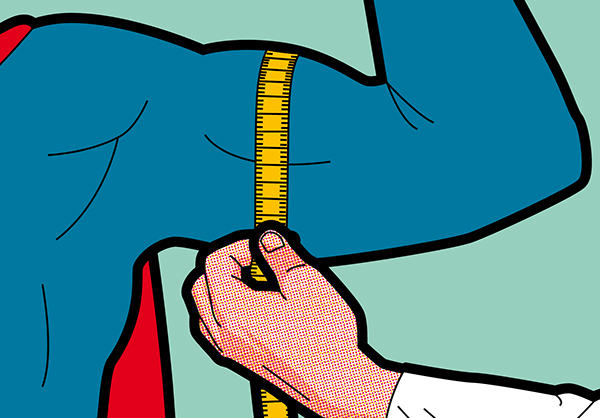I have now decided to sell a second tranche $XMR (+1,13 %) to sell. After all, a 25 x, average purchase price was €7.27, but was not entered correctly here. The proceeds will be invested in shares / ETF.
Debate sobre XMR
Puestos
10I don't think Monero will gain value in the long term. Even if the chart looks ready for another pump, I am shifting some $XMR (+1,13 %) into ETFs/shares. The delisting on almost all exchanges that inspire confidence is certainly not good for the price either. Of course I should have sold at the peak, but at least it's still ~+1200%. Something $BTC (+0,18 %) I will also sell in the next few days to reduce my overall crypto exposure. With this in mind, 10x or gtfo ✌️🍻
Is there a way to sell my $XMR (+1,13 %) ? I'm not a crypto guy, and had a very small portfolio on binance in 2022 to try this out, but since then, Monero has been banned from most of the platforms. What would be the easiest way for me to take back the cash invested in that?
We keep on falling in sentiment, but slowly. $BTC (+0,18 %) has weekend-levelled out for a short while at 21.2k which puts more people at a current loss thus slowing the decrease slightly. This also slows the recovery a little more too as even slight movements now put some pockets in near-term profits. Conversely the alt-market, although largely red did have a few stand-outs in the top 100. $EOS (-0,76 %) lead the charge with an 8% rally, $CHZ (+0,45 %) and $QNT (+0,73 %) both topped over 6% and $XMR (+1,13 %) and $DCR (-3,49 %) both added 4%.
(none of them are in my portfolio, grml)
The other end saw $CEL (+0,78 %) drop by around 10% overnight and is now trading at $2.50. $APE (+1,36 %) fell below the $5 mark and is holding at $4.98 currently, 26% down on the last 7 days.
Are we going to see a nice recovery next week?
𝙿𝚘𝚘𝚛𝚏𝚘𝚕𝚒𝚘 Ü𝚋𝚎𝚛𝚜𝚒𝚌𝚑𝚝
Brief explanation of the positions
Last update: 18.01.2023
Broker: scalable
$H4ZJ (+0,26 %) - Distributing MSCI World
Crypto exchanges: https://app.getquin.com/activity/PfAxjKLYpc
$BTC - https://app.getquin.com/activity/cufLwOUYBE
$ETH (+0,38 %) - smart contract blockchain
$BETH (+0,12 %) - https://app.getquin.com/activity/LLNxyCeneD
$XMR (+1,13 %) - magic internet money, obviously currently negligible position. Watch and consider putting more in.
Part 1: https://app.getquin.com/activity/goYFRqRKvp
Part 2: https://app.getquin.com/activity/tzibEgwsNA
Part 3: todo
$EWG2 (+0,8 %) - I do not hold it, but it is only used for approximate tracking of the minimum physical gold holdings. Performance values at the position are vmtl. wrong. Since the cost price is estimated, because I have no data on it.
The automatically generated activities for purchases / sales I delete in most cases, because otherwise they only clutter the profile.

𝐌𝐨𝐧𝐞𝐫𝐨 𝐗𝐌𝐑 | 𝐏𝐚𝐫𝐭 𝟐
𝕄𝕠𝕟𝕖𝕣𝕠 𝕚𝕤𝕥 𝕨𝕒𝕤 𝕕𝕚𝕖 𝕄𝕖𝕚𝕤𝕥𝕖𝕟 𝕧𝕠𝕟 𝔹𝕚𝕥𝕔𝕠𝕚𝕟 𝕕𝕖𝕟𝕜𝕖𝕟
Missed part 1? → https://app.getquin.com/activity/goYFRqRKvp
The image of Bitcoin as an anonymous currency for hackers, drug dealers, child pornographers, arms dealers, extreme libertarians, and other subjects persists. Besides the fact that it makes for a good story, it is also partly the truth. When Bitcoin lit the torch and shone as the only independent monetary light, in the darkness of the Internet, this was true. Bitcoin was without alternative. Morally and legally flexible service providers like Liberty Reserve or e-Gold failed because of their centralization and the fact that behind them were real people who held the strings. Sooner or later, the hammer of law enforcement struck down each of these services. Enter Bitcoin.
While the use of Bitcoin was initially a hurdle for law enforcement, this changed over time. The Bitcoin blockchain is openly viewable and every transaction can be accurately tracked. Bitcoin is only pseudonymous. This means that the allocation can be carried out retroactively, if one recognizes which real person has initiated a Bitcoin transaction.
I can already see the question marks. Imagine the online store of your trust is hacked, but only the customer numbers and the orders become public. As long as no one can assign your customer number to your name, there is no possibility that someone assigns your XXL dildo orders to you personally. In principle, however, this disclosure is possible at any time afterwards.
Now cryptocurrencies are not quite as obscure as they were in the early days. The biggest trading places for Bitcoin and Co are not some magic card buffoonery like Mtgox. Every major exchange collects the data of their users to fulfill KYC / AML requirements. This means that your transactions are automatically traceable back to you at any time. No matter if it's Bitcoin, Ethereum or any Shitcoins.
Monero is an exception here. In Monero, it is not possible to track transactions in a similar way as with Bitcoin. There is also no "richlist" for Monero like there is for other cryptocurrencies, because it is simply not possible. Transactions can only be viewed by the authorized parties, this can be the holder of the private key or someone who has received a view key from them. The view key enables optional transparency and allows insight without having to relinquish control. From the fact that no exact transaction histories can be created, it can also be inferred that 𝐗𝐌𝐑 𝐨𝐝𝐞𝐫 𝐝𝐞𝐬𝐬𝐞𝐧 𝐁𝐫𝐮𝐜𝐡𝐬𝐭ü𝐜𝐤𝐞 𝐰𝐢𝐫𝐤𝐥𝐢𝐜𝐡 𝐚𝐮𝐬𝐭𝐚𝐮𝐬𝐜𝐡𝐛𝐚𝐫 are.
To explain this in real world terms. Normally, all banknotes are the same. However, if serial numbers are noted, for example because part of a ransom, then these bills are no longer completely interchangeable. Depending on how widespread the information is, it becomes more or less difficult to issue them. After the bills have been issued, they can be traced because the transaction was probably carried out by the perpetrator or someone connected to him. It is similar with Bitcoin. Since each fragment can be traced back to its creation, this is problematic as soon as a transaction takes place in the chain that displeases someone in whatever way. In English, this is called tainted Bitcoin, which translates roughly as impure or tainted. Some will now say that there are no tainted Bitcoin and that all Bitcoin are the same. That may be technically true. But to show it again in the real world. If you can choose between a freshly printed bill and a bill with blood on it or swastika scribbles, which one will you take? Neither the bloody nor the smeared bill loses its value. These bills can be exchanged for clean ones at the Bundesbank. Nevertheless, everyone has the right to refuse "damaged" bills.
The situation is similar with Bitcoin. The Bitcoin are not damaged or impaired in their functionality. Although enough like e.g. cipherblade [1] have written their fingers to the bone "the vast majority of cryptocurrency users, concerns about having or obtaining tainted Bitcoin through no fault of their own are almost always without merit" One only has to search for closed Coinbase or Gemini accounts. Reasons for example gambling sites [2] or trading sites without KYC like Trade Ogre [3, 4]. You may think what you want about it, it doesn't take much imagination to imagine scenarios where transactions are blocked or not accepted by relevant players in the ecosystem.
The long historical tradition of gold has certainly been helped by the fact that its history has never been tied to any event or person. No matter if coin, ingot, jewelry, teeth or pharaoh's treasure, once melted down it is almost impossible to trace the gold back to its origin. Even with the most modern methods one comes here to limits. It is possible to distinguish between different purities or to make tracing possible by deliberate admixtures. However, gold itself as a pure element cannot be distinguished.
Another difference of Monero to Bitcoin is that 𝐌𝐨𝐧𝐞𝐫𝐨 𝐛𝐞𝐢 𝐝𝐞𝐧 𝐌𝐢𝐧𝐞𝐫𝐧 𝐧𝐨𝐜𝐡 𝐦𝐞𝐡𝐫 𝐰𝐞𝐫𝐭 𝐚𝐮𝐟 𝐃𝐞𝐳𝐞𝐧𝐭𝐫𝐚𝐥𝐢𝐬𝐢𝐞𝐫𝐮𝐧𝐠 𝐥𝐞𝐠𝐭. Bitcoin is now generated exclusively with specialized hardware. A single ASIC miner costs several thousand euros. Individual top devices have more hashing power than the entire BTC network in 2013. Monero switched to RandomX in 2019 for proof of work. RandomX was designed with the goal that specialized hardware is unprofitable and normal CPU are suitable for mining. This would currently allow me to generate about $2.4 per month with my 4 year old notebook. (Not taking into account electricity costs) This is an extreme difference to Bitcoin or other proof of work chains where mining with CPU has been completely hopeless for many years. Thus, the entry threshold for profitable mining is much lower than with Bitcoin. At the same time, the network is not automatically vulnerable. The graphics cards or ASICs that are used on other chains cannot be redesigned for Monero in a meaningful way. Now, surely one or the other already has botnets in mind. These are also a factor and
contribute from my point of view currently also to the fact that Monero is more decentralized than other cryptocurrencies. I would go into this in more detail in the next part.
Since solo mining is rather unprofitable for most participants in all crypto networks, mining pools have formed. However, these have the danger of accumulating "too much" computing power. This in turn can undermine decentralization. In Bitcoin, the idea of a decentralized P2P pool emerged relatively quickly. However, the BTC P2Pool is now effectively dead from what I could find. [5] A P2Pool was recently released for Monero. Only time will tell if this has a better chance. Currently, the Monero P2Pool provides about 4.7% of the computing power.
The amount of blockrewards (new coins) generated during mining is constantly falling for Monero, but will never reach zero. This lack of an upper limit is often interpreted very negatively, as an infinite supply is assumed. While Bitcoin's issuance is halved again and again (halving), Monero's issuance falls continuously, as mentioned. Currently, the new issuance in relation to the existing circulation is lower for Monero than for Bitcoin. Say 𝐚𝐤𝐭𝐮𝐞𝐥𝐥 𝐡𝐚𝐭 𝐌𝐨𝐧𝐞𝐫𝐨 𝐞𝐢𝐧𝐞 𝐠𝐞𝐫𝐢𝐧𝐠𝐞𝐫𝐞 𝐈𝐧𝐟𝐥𝐚𝐭𝐢𝐨𝐧 𝐚𝐥𝐬 𝐁𝐢𝐭𝐜𝐨𝐢𝐧. This will only reverse in the future when Bitcoin falls below Monero's issuance due to further halving. [7] The reason for this is the tail - issuance on Monero. As mentioned, there is no fixed cap. In order to keep mining attractive, a minimum amount of 0.6 XMR per block was set. If the new Bitcoin issue falls to 0, miners only earn money from the transaction costs.
In the next part, we'll look at why Monero's stakeholders are more heterogeneous than Bitcoin's and why that's good. Also, what are the reactions to privacy coins like Monero and how Monero reacts to them.
[1] https://cipherblade.com/blog/tainted-bitcoin-isnt-what-you-think-it-is/
[2] https://www.reddit.com/r/Bitcoin/comments/69f4tb/coinbase_closed_my_account/
[3] https://www.reddit.com/r/PirateChain/comments/p7mux0/gemini_closing_accounts_likely_for_interacting/
[4] https://www.reddit.com/r/PirateChain/comments/pcbntu/can_no_longer_withdrawal_from_gemini/
[5] http://109.229.69.94:9334/static/
[6] https://www.getmonero.org/2021/10/05/p2pool-released.html

𝐌𝐨𝐧𝐞𝐫𝐨 𝐗𝐌𝐑 | 𝐏𝐚𝐫𝐭 𝟏
𝕎𝕠𝕫𝕦 ℙ𝕣𝕚𝕧𝕒𝕔𝕪?
Since the topic automatically resonates and I don't feel like illuminating it in the actual analysis, I'll put it in a Part 1. Obviously Wall of Text incoming.
For the "I have nothing to hide faction" I refer to a Snowden quote.
𝐀𝐫𝐠𝐮𝐢𝐧𝐠 𝐭𝐡𝐚𝐭 𝐲𝐨𝐮 𝐝𝐨𝐧'𝐭 𝐜𝐚𝐫𝐞 𝐚𝐛𝐨𝐮𝐭 𝐭𝐡𝐞 𝐫𝐢𝐠𝐡𝐭 𝐭𝐨 𝐩𝐫𝐢𝐯𝐚𝐜𝐲 𝐛𝐞𝐜𝐚𝐮𝐬𝐞 𝐲𝐨𝐮 𝐡𝐚𝐯𝐞 𝐧𝐨𝐭𝐡𝐢𝐧𝐠 𝐭𝐨 𝐡𝐢𝐝𝐞 𝐢𝐬 𝐧𝐨 𝐝𝐢𝐟𝐟𝐞𝐫𝐞𝐧𝐭 𝐭𝐡𝐚𝐧 𝐬𝐚𝐲𝐢𝐧𝐠 𝐲𝐨𝐮 𝐝𝐨𝐧'𝐭 𝐜𝐚𝐫𝐞 𝐚𝐛𝐨𝐮𝐭 𝐟𝐫𝐞𝐞 𝐬𝐩𝐞𝐞𝐜𝐡 𝐛𝐞𝐜𝐚𝐮𝐬𝐞 𝐲𝐨𝐮 𝐡𝐚𝐯𝐞 𝐧𝐨𝐭𝐡𝐢𝐧𝐠 𝐭𝐨 𝐬𝐚𝐲.
Do we have that out of the way now. Who currently pays does this idR with cash or digitally via a EC / credit card. While with a cash payment in most cases very few data result* the digital payment methods always leave a data trace. Whether or not there is currently a "malicious" effort to abolish cash is irrelevant at this point. The question is rather how will payments be made in the future and what impact will this have?
If we assume that digital payments will prevail in the future, then the next question is in what form? We don't need to fool anyone, EC cards are on their way straight to the dump. 𝐊𝐫𝐞𝐝𝐢𝐭𝐤𝐚𝐫𝐭𝐞𝐧 (many are just debit cards, but let's not make it more complicated than it is) are available from a variety of vendors, and their functionality can basically be lumped together in a simplified way. There is some sort of value attached to the card, this is converted via the card operator if necessary and routed to a payee. What value is behind the card is quite unimportant. It can be a credit line or a positive sum of any currency or currency substitute. Meaning whether you make a payment with euros, dollarinos, bitcoin, Chuck E cheese tokens or anything else doesn't matter. The card operator as a (simplified) middleman takes the input value and distributes it, after deducting fees, converted if necessary. In the process, this intermediary receives data for this transaction. In reality, this middleman consists of several stations and information on this payment transaction is also available at the payee. How the data is handled varies from country to country. However, the desirability of this data exists everywhere.
𝐃𝐢𝐞 𝐅𝐫𝐚𝐠𝐞 𝐢𝐬𝐭 𝐚𝐥𝐬𝐨 𝐰𝐞𝐧𝐢𝐠𝐞𝐫, 𝐨𝐛 𝐝𝐢𝐞𝐬𝐞 𝐃𝐚𝐭𝐞𝐧 𝐢𝐫𝐠𝐞𝐧𝐝𝐰𝐚𝐧𝐧 𝐯𝐨𝐥𝐥𝐮𝐦𝐟ä𝐧𝐠𝐥𝐢𝐜𝐡 𝐚𝐮𝐬𝐠𝐞𝐰𝐞𝐫𝐭𝐞𝐭 𝐰𝐞𝐫𝐝𝐞𝐧 𝐬𝐨𝐧𝐝𝐞𝐫𝐧 𝐰𝐚𝐧𝐧. With the existence of cash as an alternative, too excessive evaluation is probably not something that is carried forward in a big way at this time.
Methods that try card payment to reduce the information at the payee or intermediaries are good, but miss a basic problem. 𝐄𝐢𝐧𝐞 𝐬𝐭𝐚𝐚𝐭𝐥𝐢𝐜𝐡𝐞 𝐈𝐧𝐬𝐭𝐚𝐧𝐳 𝐰𝐢𝐫𝐝 𝐬𝐢𝐜𝐡 𝐥𝐚𝐧𝐠𝐟𝐫𝐢𝐬𝐭𝐢𝐠 𝐙𝐮𝐠𝐫𝐢𝐟𝐟 𝐯𝐞𝐫𝐬𝐜𝐡𝐚𝐟𝐟𝐞𝐧 𝐤ö𝐧𝐧𝐞𝐧. Since a sufficiently powerful state can force the central authority (simplifying the card providers) to cooperate.
So the obvious question now is, can you reliably process payments without a central authority? Yes you can. Bitcoin does it. Not so famously in Layer 1, which is why there is the Lightning Network (LN) as a Layer 2 solution. Hardly anyone will dispute that fast, inexpensive payments are possible via the LN. The basic problem with Bitcoin, however, is that Layer 1 is extremely open to analysis and the LN is currently still under development and we have to wait and see where the journey will take us.
Therefore, in the next part we will see if and how Layer 1 of a blockchain can be made more resistant to analysis and what else speaks for / against Monero.
Part 2: https://app.getquin.com/activity/tzibEgwsNA
Full Snowden quote:
Some might say "I don't care if they violate my privacy; I've got nothing to hide." Help them understand that they are misunderstanding the fundamental nature of human rights. Nobody needs to justify why they "need" a right: the burden of justification falls on the one seeking to infringe upon the right. But even if they did, you can't give away the rights of others because they're not useful to you. More simply, the majority cannot vote away the natural rights of the minority.
But even if they could, help them think for a moment about what they're saying. Arguing that you don't care about the right to privacy because you have nothing to hide is no different than saying you don't care about free speech because you have nothing to say.
A free press benefits more than just those who read the paper. [1]
* Theoretically, cash could be tracked by using fingerprints or genetic traces during payment transactions. Similarly, bills have serial numbers that can be tracked. However, aside from ransomware and the like in criminal cases, cash tracking via serial numbers is, to my knowledge, rather anecdotal. See [0]

After @christian has decided to buy I must of course look at the whole thing a little closer. Had once a small amount of Monero, but now thinking about going in stronger 🤝😁 thanks for the tip!
Valores en tendencia
Principales creadores de la semana









